Category Archives: Unsolved Crimes of Los Angeles
One Hundred Forty Dollars a Day, Conclusion
Imagine being 31-years-old and looking at life in prison. Craig Coley didn’t have to imagine it.
There are few decent options for a man in prison, but dozens of opportunities for him to further screw up his life. Craig faced a choice. He could involve himself in gangs, drugs and violence, or he could preserve his humanity.
Craig chose the latter.
He maintained his innocence from the moment of his arrest, and he never wavered. But protestations of innocence are not evidence. The guilty often shout the loudest about how they have been betrayed by the legal system.
Craig adjusted to prison, as well as anyone can, but a part of him never gave up hope. Another lifer at Folsom taught him how to make jewelry. He placed his items in the gift shop and sent the proceeds to his mom to hire investigators.
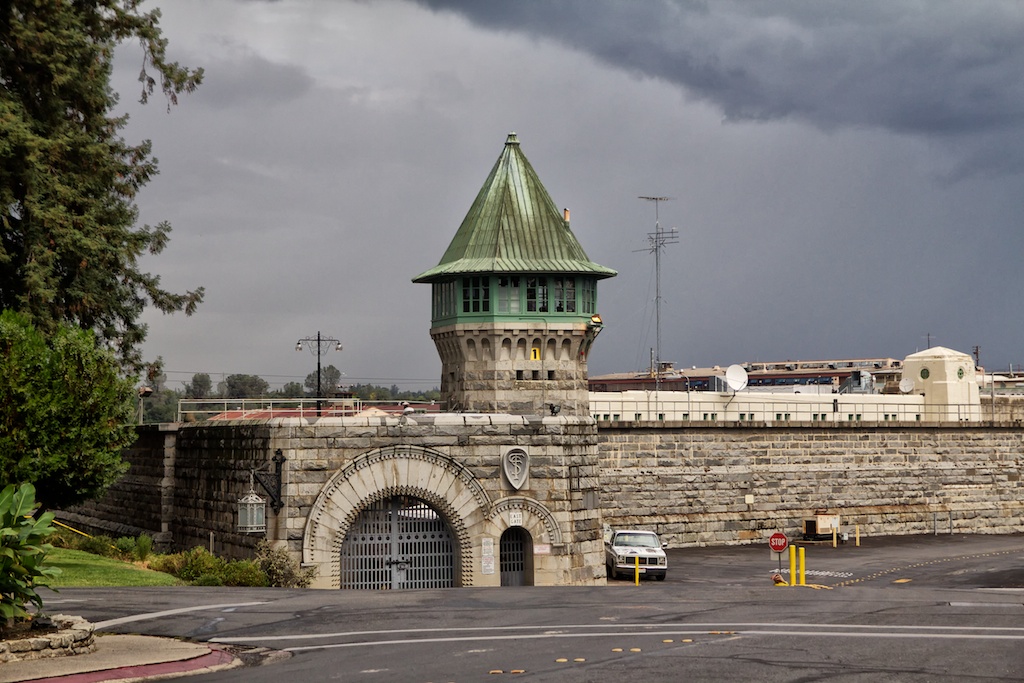
As Craig faced his tenth year in prison, a Simi Valley detective, Michael Bender, came across Craig’s case file. After reading it over he said, “. . . a real investigation hadn’t occurred.”

Soon after reading the file, Mike went to visit Craig in prison. He talked to Craig, and at the end of it he believed in Craig’s innocence. He said, “In dealing with a lot of bad guys over the years, there are mannerisms and body language you come to know. He [Craig] didn’t have that.”
Craig had gained a tough advocate who understood the system. Mike didn’t just appear tough. In 1985 he earned the title of Toughest Cop Alive. He competed against cops from the world over.
The competition is based on athletic prowess. When he won the world competition Mike was 450 points ahead of his nearest competitor. Mike earned the title several times.
To have even the slightest chance of winning Craig’s release, Mike needed every bit of physical and mental strength he possessed. He didn’t know it but he had entered a marathon.
Back at Simi Valley PD, Mike talked to his supervising lieutenant, the same man who was in charge of the original murder investigation. He was not interested in having the Coley case second guessed and possibly overturned.
Unwilling to give up, Mike took Craig’s case to the city manager, city attorney, a local congressman, the attorney general of the State of California, the ACLU and the FBI.
In 1991, Mike was ordered to stop pushing the case or face termination. Mike quit the police department and left Simi Valley. He took with him 16 boxes of files that Craig’s mother had amassed.
Every Saturday Mike and Craig talked on the phone. Mike visited the prison when he could. His daughter or Craig’s mother would often accompany him (Craig’s father passed away in 1989).
Rather than dwell on what seemed impossible, Craig put his energy into running a support program for incarcerated veterans. He was a mentor and a model prisoner.
Craig became a practicing Christian in 2005. He said it helped him “cut out all the nonsense.” He earned degrees in theology, Biblical studies and Biblical counseling.
Mike and his family moved to Northern California in 1991. They stayed there until 2003, when they relocated to Carlsbad near San Diego.
During all those years, Mike never stopped trying to get Craig’s case re-examined.
A turning point in the case came in September 2015 when then Gov. Brown agreed to conduct an investigation. In 2016, Mike met with David Livingstone, the new Simi Valley Police Chief, who began his own investigation with the Ventura County District Attorney’s office.
On November 11, 2017—the 39th anniversary of the crime—investigators went back to the apartment building where the crime occurred. They went to the apartment where the neighbor said she saw Coley’s truck and looked out the window at 5:30 a.m.—as she said she did. The investigators determined that the lighting conditions made it difficult to see any details on vehicles below and that it was impossible to see inside any vehicle.
In many cases where someone is wrongly accused it is DNA evidence that is the key that unlocks the cell door. It was no different for Craig. DNA evidence which was supposed to have been destroyed, was discovered in storage at the original testing lab. The sperm, blood and skin cells on Rhonda’s sheets and clothing belonged to another man.
No DNA evidence was found to connect Craig to Donnie’s murder, either.
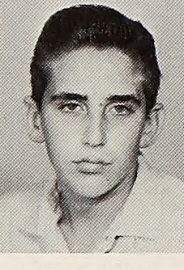
On November 22, 2017, Governor Brown granted Coley a pardon based on innocence. The pardon said, “Mr. Coley had no criminal history before being arrested for these crimes and he has been a model inmate for nearly four decades. In prison, he has avoided gangs and violence. Instead, he has dedicated himself to religion. The grace with which Mr. Coley has endured this lengthy and unjust incarceration is extraordinary.”
Craig was released later that day, in time to spend Thanksgiving dinner with Mike and his family. About his release, Craig said, “You dream about it, you hope for it, but when it happens, it’s a shock. To experience it was something I never thought would feel as good. It was joy, just pure joy. I got all tingly in my stomach and then I was bawling like a baby for a while.”
On November 29, an attorney for Coley asked that Coley’s conviction be vacated. That motion was granted and the judge issued a finding of actual innocence.
In February 2018, Gov. Brown approved a $1.95 million payment. That is $140 for each day he was wrongfully behind bars.

In June 2018, Coley filed a federal civil rights lawsuit seeking damages from the city of Simi and Ventura County. In February 2019, Simi Valley settled with Coley for $21 million.

That Craig fought to win his release is no surprise; but why did Mike spend 28 years of his life fighting for Craig’s freedom? Mike summed it up, “I always believed in truth, integrity and honor. “I’m glad this story has a happy ending. If I was on my deathbed knowing he was still in prison, I would have had a hard time with that.”
EPILOGUE
Following Craig Coley’s release from prison there was a new suspect in the murders of Rhonda and Donnie Wicht – Joseph James DeAngelo – the Golden State Killer.

DNA cleared Craig of the murders, and it also cleared DeAngelo.

Unless the killer is dead or incarcerated, Rhonda and Donnie’s killer is still out there.
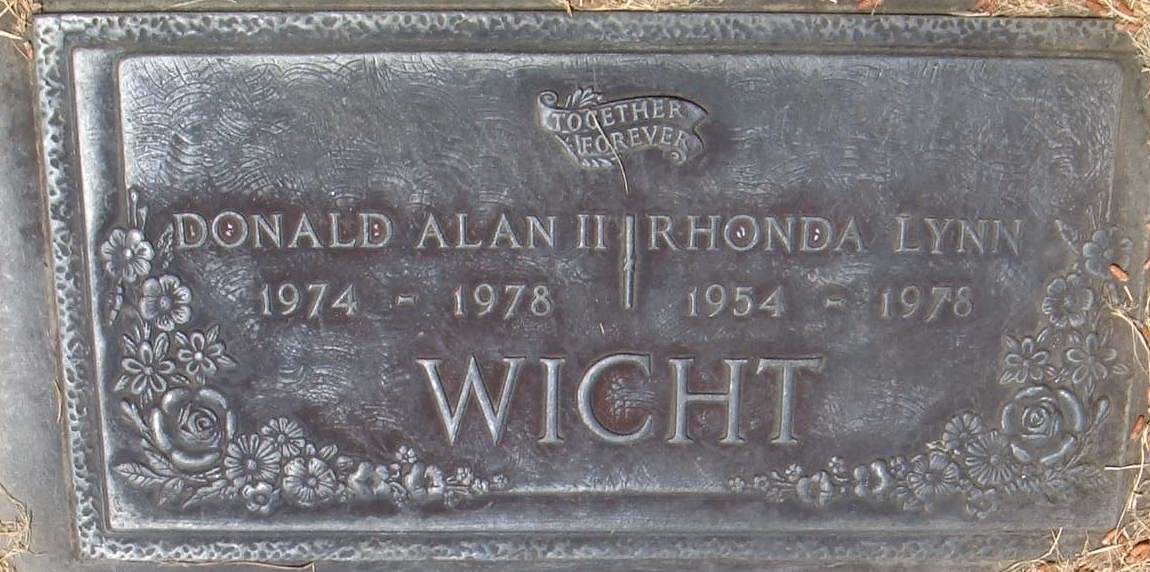
One Hundred Forty Dollars a Day
Ohio native, Edgar Hamilton, a machinist, moved his young family to Pasadena, California in the late 1950s. The Hamilton’s were among the many thousands of new SoCal residents who chose to leave the harsh Midwestern winters behind them – and who could blame them?
The Southern California landscape was a patchwork of bean fields and orange groves. Summer nights smelled of jasmine. The post-war housing boom made it possible for working-class families to achieve the dream of a ranch style home with a backyard swimming pool.
If you visited Knott’s Berry Farm it was for a chicken dinner, homemade biscuits and boysenberry pie. Disneyland’s Matterhorn Mountain was the park’s main attraction.
Until the late 1960s, the vibe stayed the same in SoCal. It changed everywhere in the late 1960s. Assassinations, protests and Vietnam dominated the news cycle.
Around 1970, the Hamilton family moved out to Simi, in Ventura County. Many working-class people migrated to Simi then. They came largely from East and Central Los Angeles. The population of the Simi Valley swelled – in fact the Route 101 corridor became a full-fledged freeway, but life was still lived at a slower pace than in L.A.
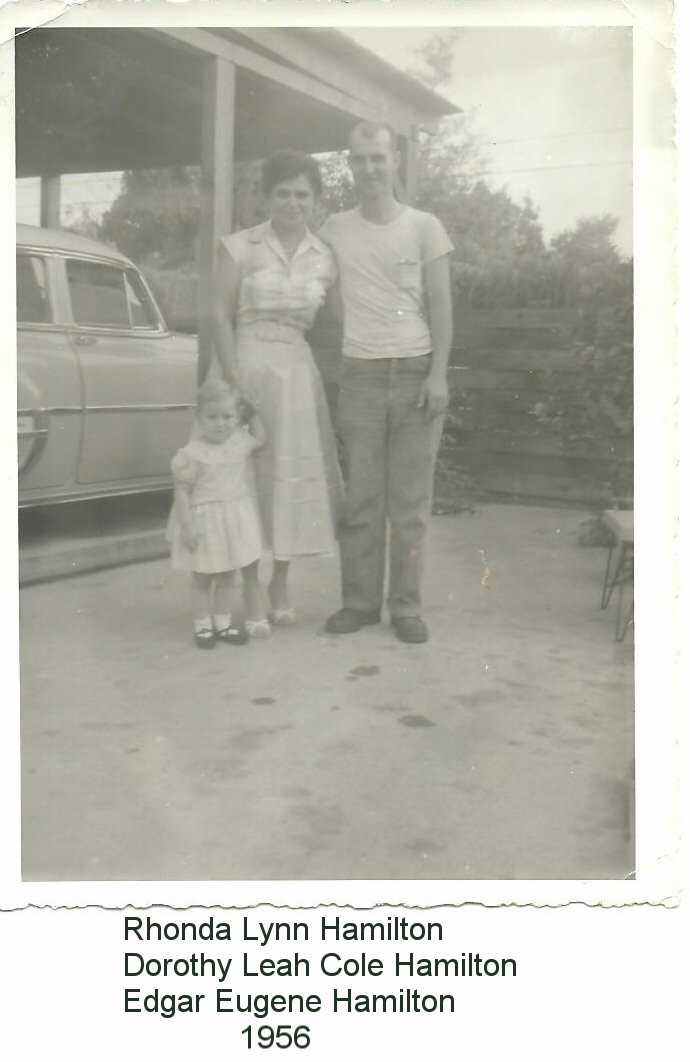
Edgar’s family thrived. His oldest daughter, Rhonda, married young and for a while she lived in Texas. Her marriage to Donald Wicht failed – but not completely – they had a beautiful son, Donnie. He was the light of Rhonda’s life.
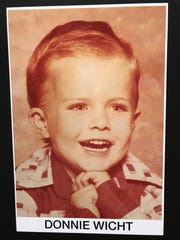
Following her divorce in 1977, Rhonda and Donnie returned to Simi. Rhonda waitressed to provide for herself and her son, and to pay for cosmetology school. She fixed her gaze on the future.
Rhonda’s younger sister, Rachelle (Shelley), planned to attend a wedding on November 11, 1978. Rhonda promised to do her hair.
On the morning of the wedding, Shelly telephoned Rhonda to let her know she would soon be on her way over. Rhonda didn’t answer. Shelley tried again. Still no answer.
Now Shelley was starting to worry and her uneasiness turned into action. She got into her car and sped over to the Tierra Apartments at 1861 Byers Street, where Rhonda and Donnie lived.

Shelley found the front door of the apartment locked. She stood outside. She had an overwhelming sense of dread. She phoned her husband, and it was he who entered the apartment through a window. Shelley said, “. . . when I got inside, I just stood in the living room. I couldn’t go any farther. I went downstairs, called my parents, and the rest was a blur.”
Rhonda was beaten, raped, and a macramé rope was pulled tight around her neck. Four-year-old Donnie was suffocated to death with a pillow. One of his arms dangled over the side of his bed.
Someone phoned the police. Shelley phoned her parent’s home and got her younger brother, Rick. She may have been incoherent, but he got the message. He said later, “I knew something was wrong, so I jumped into my car, and when I got there, no one stopped me; I just walked right into a crime scene.”
Rick sleepwalked through the rest of his senior year at Royal High School. He said he was just trying to get to his graduation.
Rhonda’s family was devastated. She didn’t have any enemies. She was a kind and caring twenty-four-year-old with a toddler. Who would want them dead?

Police found only one person who may have had it in for Rhonda. Craig Coley.
The 31-year-old restaurant night manager was Rhonda’s steady boyfriend until recently. Rhonda wanted to end their relationship.
Simi police had questions for Coley, so they went out to find him and bring him in.
NEXT TIME: A suspect is arrested.
MIDNIGHT IN THE DESERT –A CONVERSATION ABOUT HISTORIC LOS ANGELES CRIME
On March 10th, B.C. (before Covid) I was interviewed by Dave Schrader for his wonderful radio show, MIDNIGHT IN THE DESERT. We talked for 3 hours about historic Los Angeles crime.
When I first agreed to do the interview I wondered how we would fill the time. By the 2 1/2 hour mark I knew we’d never be able to cover everything. The time flew. Dave is a terrific host and I recommend that you check out his show. I hope to make a return visit sometime during the summer.
Dave’s area of expertise is the paranormal, but he also has an interest in crime. Here’s a little more about Dave:
Dave Schrader has been one of the leading voices of the paranormal since 2006 when he launched his wildly popular talk show, Darkness on the Edge of Town on Twin Cities News Talk – Minneapolis’s top-rated AM talk station.
The show grew to become one of the station’s most successful shows and most-downloaded podcasts, expanding Schrader’s reach globally. Seeing an opportunity, Schrader moved his show to Chris Jericho’s network of shows on PodcastOne, where he further expanded his worldwide audience.
You can find Dave on MIDNIGHT IN THE DESERT.
30 More Years of Crime in L.A.
When I began this blog in December 2012, I arbitrarily chose to examine crime in Los Angeles during the years from 1900 to 1970. Now, however, I think it is time to expand the purview to include the decades of 1970, 1980 and 1990 to encompass all of the last century. In terms of crime in the City of Angels, the last three decades of the 20th Century are enormously interesting.
The 1970s have been called one of the most violent decades in U.S. history. Homicide rates climbed at an alarming rate and people felt increasingly vulnerable.
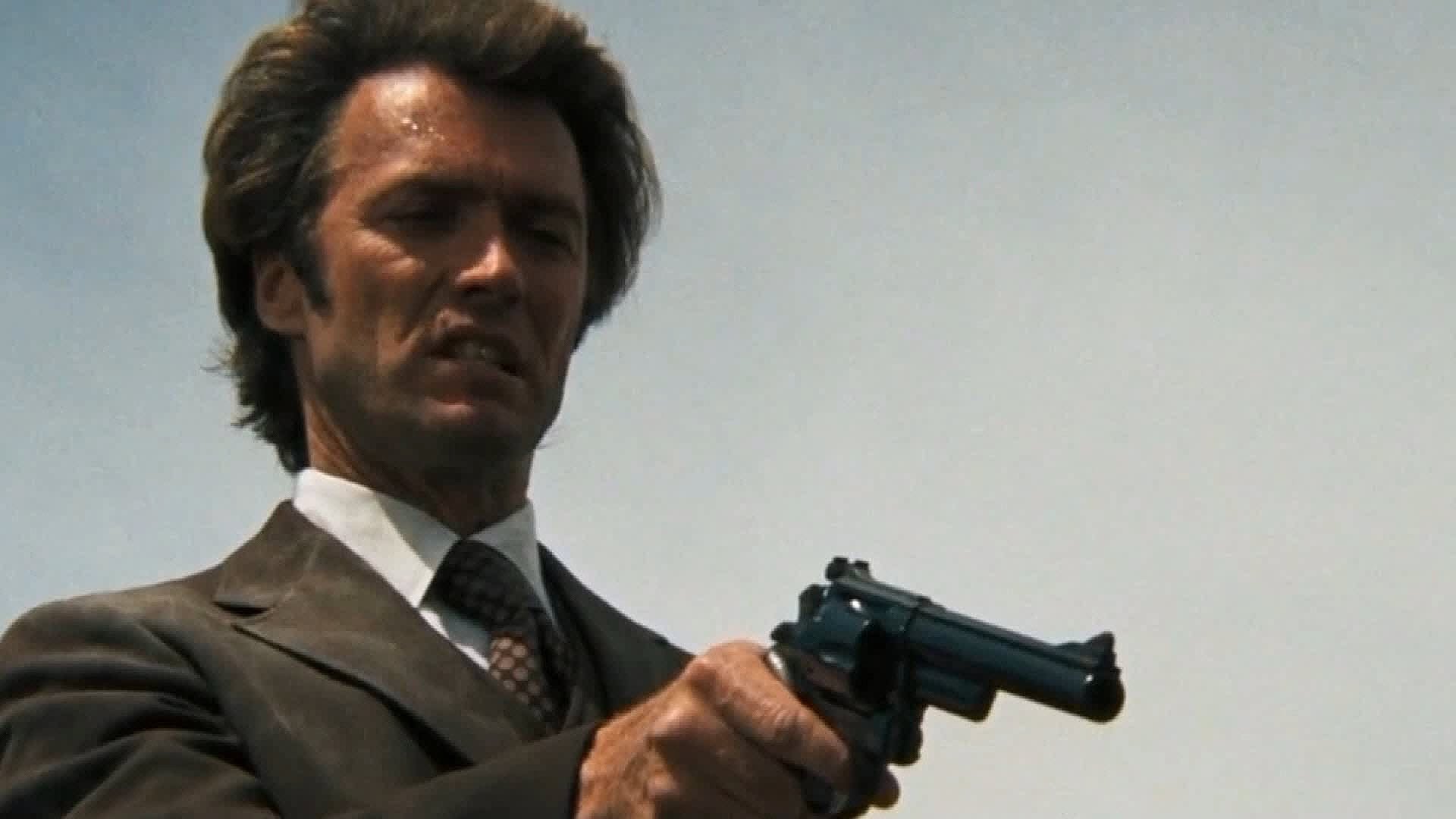
Clint Eastwood as Dirty Harry
Hollywood contributed to popular culture, and helped fuel the debate on crime and punishment, with a slew of vigilante films like Dirty Harry and Death Wish. The films showed bad guys being blown away by impressively large weapons. It was cathartic, but not terribly realistic.
It was during the ’70s that the bogeyman got a new name when FBI Investigator Robert Ressler coined the term “serial killer”.
In 1978 convicted rapist and registered sex offender, Rodney Alcala, appeared on the Dating Game. Why wasn’t he more thoroughly vetted by the show’s producers? I have no idea. Even more astounding than his appearance was the fact that he won! The bachelorette who selected Rodney ultimately declined to go out with him–she found him “creepy”. He’s currently on California’s death row and is believed to have committed as many as 50 murders.
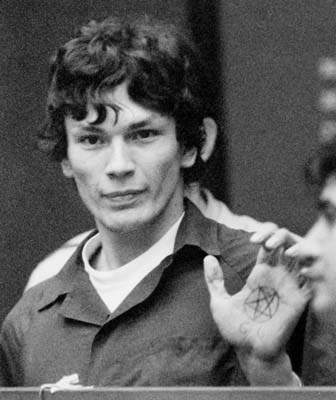
Richard Ramirez aka the Night Stalker, flashes a pentagram on his palm.
Some people joined cults where they banded together with like-minded folks for spiritual comfort and to retreat from the scary world-at-large. But there is not always safety in numbers, and evil can assume many guises. In 1978, over 900 members of the People’s Temple died in a mass suicide commanded by their leader, Jim Jones. The group was living in Guyana when they drank cyanide-laced Kool-Aid. The People’s Temple may have been founded in Indiana, but like so many other cults before them they established a presence in L.A.
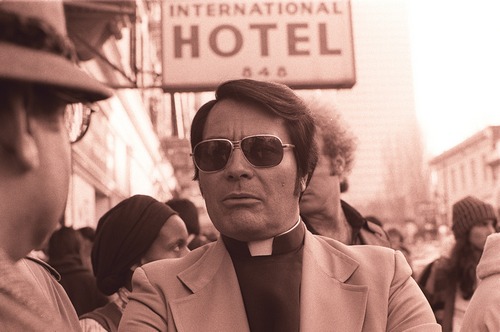
Jim Jones of the People’s Temple
A crack cocaine epidemic swept the country in the early 1980s. It decimated communities and cost many people their lives. Crack was inexpensive, easily accessible, and even more addictive than regular cocaine.
The 1980s gave rise to a “satanic panic” which resulted in some of most bizarre prosecutions we’ve seen in this country since the Salem Witch Trials in the 1690s. The McMartin Preschool abuse trial was the most costly ($15 million) ever in the U.S. and resulted, rightfully I believe, in no convictions.
Surprisingly, there was a decline in crime during the 1990s, and it has been attributed to a variety of factors including: increased incarceration; increased numbers of police, growth in income; decreased unemployment, decreased alcohol consumption, and even the unleading of gasoline (due to the Clean Air Act). Despite the decline, there was still enough murder and mayhem to make us uneasy.
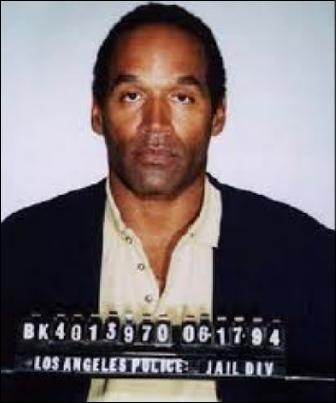 Here in L.A. there was the murder trial of O.J. Simpson, the so-called Trial of the Century. If you remove fame, wealth, and race and reduce the crime to its basic elements you end up with nothing more than a tragic domestic homicide–the type of crime which is altogether too common everywhere–yet the case continues to fascinate.
Here in L.A. there was the murder trial of O.J. Simpson, the so-called Trial of the Century. If you remove fame, wealth, and race and reduce the crime to its basic elements you end up with nothing more than a tragic domestic homicide–the type of crime which is altogether too common everywhere–yet the case continues to fascinate.
Heidi Fleiss, the Hollywood Madam, made news in 1993. At her pandering trial actor Charlie Sheen divulged that he had spent in excess of $53,000 for services rendered by Heidi’s girls.
Please join me as I explore the entirety of 20th Century crime in Los Angeles.
Joan
